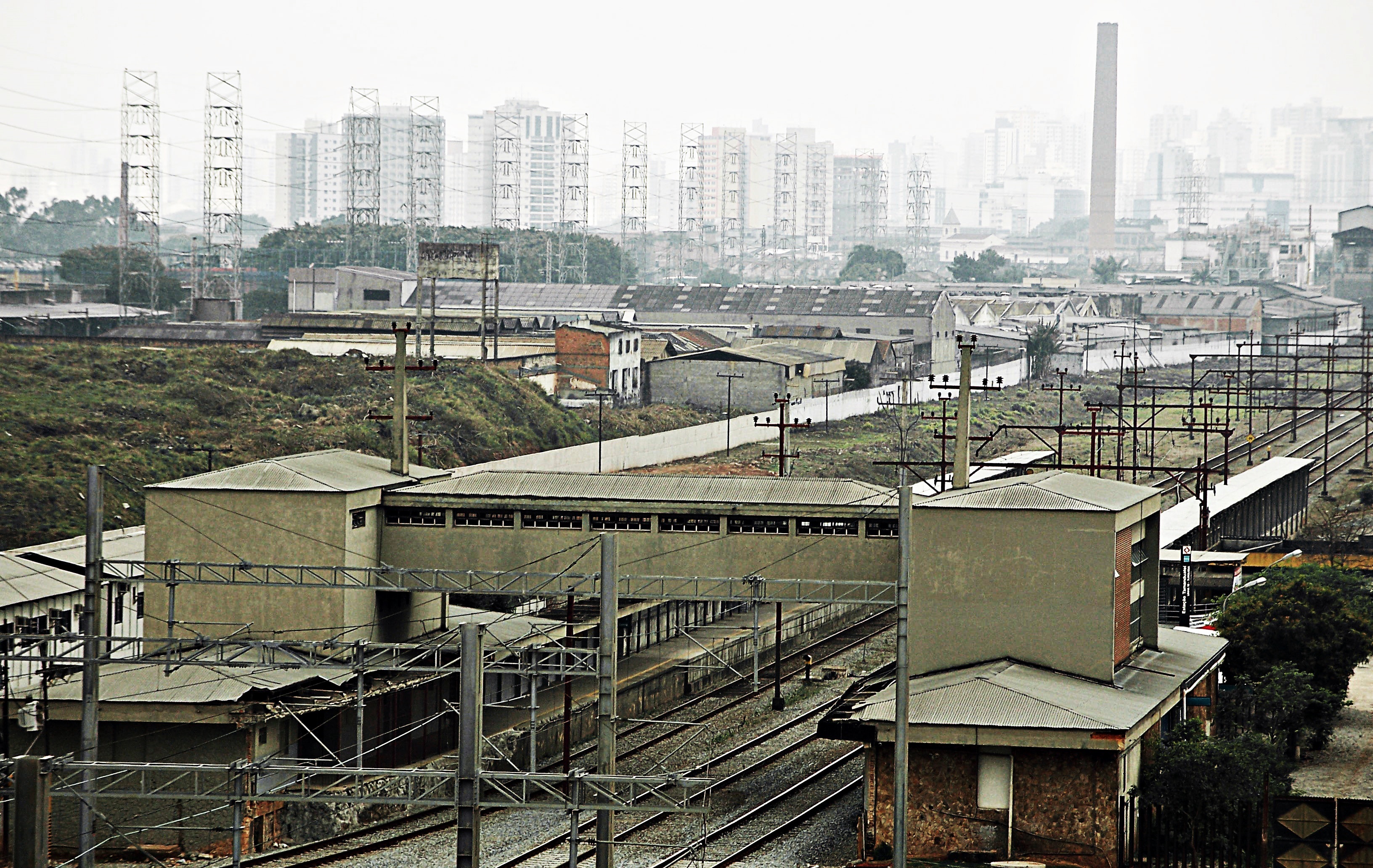|
Tamanduateí (CPTM)
Tamanduateí, formerly Studebaker/Vemag Stop, is a train station on CPTM Line 10-Turquoise, with connection to São Paulo Metro Line 2-Green. It's located between districts Ipiranga and Vila Prudente, in the neighbour hood of Vila Independência, in São Paulo. History After World War II, Brazil started to encourage the nationalization of automotive industry. Therefore, the state of São Paulo was the destination of many multinational companies from the automotive branch. These companies, taking advantage of Anchieta Highway and Santos-Jundiaí Railway, getting installed in the surroundings of these corridors, most notably in the ABC zone. The Distribuidora de Automóveis Studebaker Ltda., founded in 1945, was installed next to the km 70 of the Santos Jundiaí Railway, between São Caetano and Ipiranga stations, and dedicated itself initially to vehicle mounting of the American homonymous and other like Studebaker, Massey Harris, Scania Vabis, Kenworths and Ferguson in regime S ... [...More Info...] [...Related Items...] OR: [Wikipedia] [Google] [Baidu] |
Ipiranga (district Of São Paulo)
Ipiranga (, from the Tupi (''y'', river; ''pirang'', red) for "red river") is a historical district located in the subprefecture of the same name of São Paulo, Brazil. The name Ipiranga comes from the river (which now is a brook) of the same name located in the region, which means "red river" in a Tupí–Guaraní language. The Independence Park (Parque da Independência), where supposedly the Emperor Pedro I of Brazil proclaimed the independence of Brazil, the Paulista Museum, which exhibits classic architecture and a collection of Brazilian colonial artifacts, and the Museum of Zoology of the University of São Paulo, are also located in Ipiranga. The Ipiranga Brook is perhaps one of the most famous Brazilian brooks, because it is mentioned in the first line of the Brazilian National Anthem. The region near the Tamanduateí River had industrial characteristics, to the point where buses and trams heading there had the destination labeled "Factory". The area next to Na ... [...More Info...] [...Related Items...] OR: [Wikipedia] [Google] [Baidu] |
São Paulo Metro
The São Paulo Metro (, ), commonly called the ''Metrô'', is one of the rapid transit companies serving the city of São Paulo, alongside the Companhia Paulista de Trens Metropolitanos, São Paulo Metropolitan Trains Company (CPTM), Via Quatro and Via Mobilidade, all four forming the largest Transport in São Paulo#Rail transport, metropolitan rail transport network of Latin America. The metro system carries about 4,200,000 passengers a day. The six lines in the metro system operate on of route, serving 91 stations. It is complemented by a network of metropolitan trains operated by CPTM and ViaMobilidade, which serve the city of São Paulo and the Greater São Paulo, São Paulo Metropolitan Region. The systems combined form a long network, all accessible via one single ticket. The metropolitan trains differs from Metro because it also serves other municipalities around São Paulo with larger average distance between stations and freight trains operating in some lines. Conside ... [...More Info...] [...Related Items...] OR: [Wikipedia] [Google] [Baidu] |
Luz (CPTM)
Luz Station (, ) is a commuter rail and intercity rail station in the Bom Retiro district of São Paulo, Brazil, serving RFFSA, the intercity rail network of Brazil, CPTM Line 7-Ruby, Line 11-Coral and Line 13–Jade (Airport-Express). It has subway connections to São Paulo Metro Line 1-Blue and ViaQuatro Line 4-Yellow via its underground metro station of the same name. It is currently located in Bairro da Luz and was driven between the years of 1895 and 1901, designed by the British architect Charles Henry Driver for the São Paulo Railway, a company based in London and which was responsible for building the first railway line in the state of São Paulo, ligand or port of Santos à cidade de Jundiaí. The station houses the Museum of the Portuguese Language, established in 2006. The Luz (São Paulo Metro), Luz Metro station is also located within the complex. History The station was built in the late 19th century with the purpose of being the headquarters of the newl ... [...More Info...] [...Related Items...] OR: [Wikipedia] [Google] [Baidu] |

